First it jumped from bats to pigs. Then pigs gave it to people. Now the brain-damaging Nipah virus has found a way to leap from bats to humans without an intermediary host.
Filed May 16, 2023
CHANGAROTH, INDIA
On May 3, 2018, Muhammad Sabith awoke with a fever while staying with his parents in this village near the southwest coast of India.
The 26-year-old electrician assistant went to a community hospital and was placed in a ward with other patients for observation. Over the next 24 hours, his symptoms quickly worsened: vomiting, delirium, tremors and violent coughing. The staff directed him to a medical center where he was tested for mosquito-borne illnesses like dengue and malaria.
All came back negative. Doctors treated him with antibiotic and antiviral medications, to no avail. His lungs filled with fluid, his oxygen levels plunged and, on May 5, Sabith “was no more,” his grieving younger brother, Muthalib, told Reuters.
Medical staff recorded his cause of death as viral encephalitis, but they really didn’t know what killed him. It would be nearly two weeks before doctors realized that Sabith had contracted a virus from bats, an event known as zoonotic spillover, when a pathogen jumps from one species to another.
By then, another 22 people – including his father, an older brother, an aunt, healthcare workers and patients who had shared his room – had been infected, according to scientific studies published after the outbreak. Of those who fell sick, only two people survived.
HOW THE NIPAH VIRUS SPREAD
Muhammad Sabith, a 26-year-old electrician’s assistant suffering from fever, went to a community hospital in 2018 in Perambra, India. Sabith, whom epidemiologists call “the index case,” died two days later. It took doctors almost two weeks to figure out he had succumbed to the Nipah virus. By then, 22 others had been infected. All but two died. This is how the virus spread.
Sabith’s story is a study in the rapid evolution of disease and risk, a problem exacerbated by runaway development in ecologically sensitive areas. As more and more people across the globe live close to bats and other animals that host deadly viruses, those pathogens are finding easier pathways to infect people, often with lethal consequences.
Nipah virus, the disease that killed Sabith, has proven particularly adept at finding new routes to infection. It is carried by some Asian fruit bats, and was responsible for previous outbreaks in Malaysia and Bangladesh. Nipah is considered one of the most dangerous pathogens circulating in the wild. There is no vaccine to prevent infection and no treatment to cure it.
After Sabith died and his relatives fell ill, a doctor who had recently read about Nipah suggested testing for it on a hunch. One test after another came back positive, as did samples from a colony of bats roosting near Sabith’s home, according to scientists who studied the outbreak.
Once authorities here were aware of the Nipah diagnosis, they quickly isolated everyone they could find who had been near him or other known contacts. While those precautions stopped that particular outbreak, the case also underscored the fast and aggressive path the pathogen can take.
A Reuters analysis of conditions that make such outbreaks possible shows that by the time Sabith fell ill, this corner of India had become one of the likeliest places on Earth for a spillover to people from bats, a leading wildlife source of new diseases in humans. Reuters has dubbed these areas “jump zones.”
Deforestation and development bring humans ever closer into contact with once-remote breeding grounds for bats and the viruses they carry. In Kerala, a tropical state surrounding Sabith’s hometown, extensive tree loss and rapid urbanization in recent decades created ideal conditions for a virus like Nipah to emerge.
The 2018 outbreak was Nipah’s first known appearance in this part of India. But there have been at least two Nipah spillovers in Kerala since then – to a 21-year-old college student who survived in 2019 and a 13-year-old boy who died in 2021.
Pragya Yadav, the lead scientist on Nipah research at India’s National Institute of Virology, said the expansion of human settlement in Kerala and worldwide has led to habitat loss, declining biodiversity and migration of animals closer to people, “which eventually helps the virus to jump from bats to humans.”
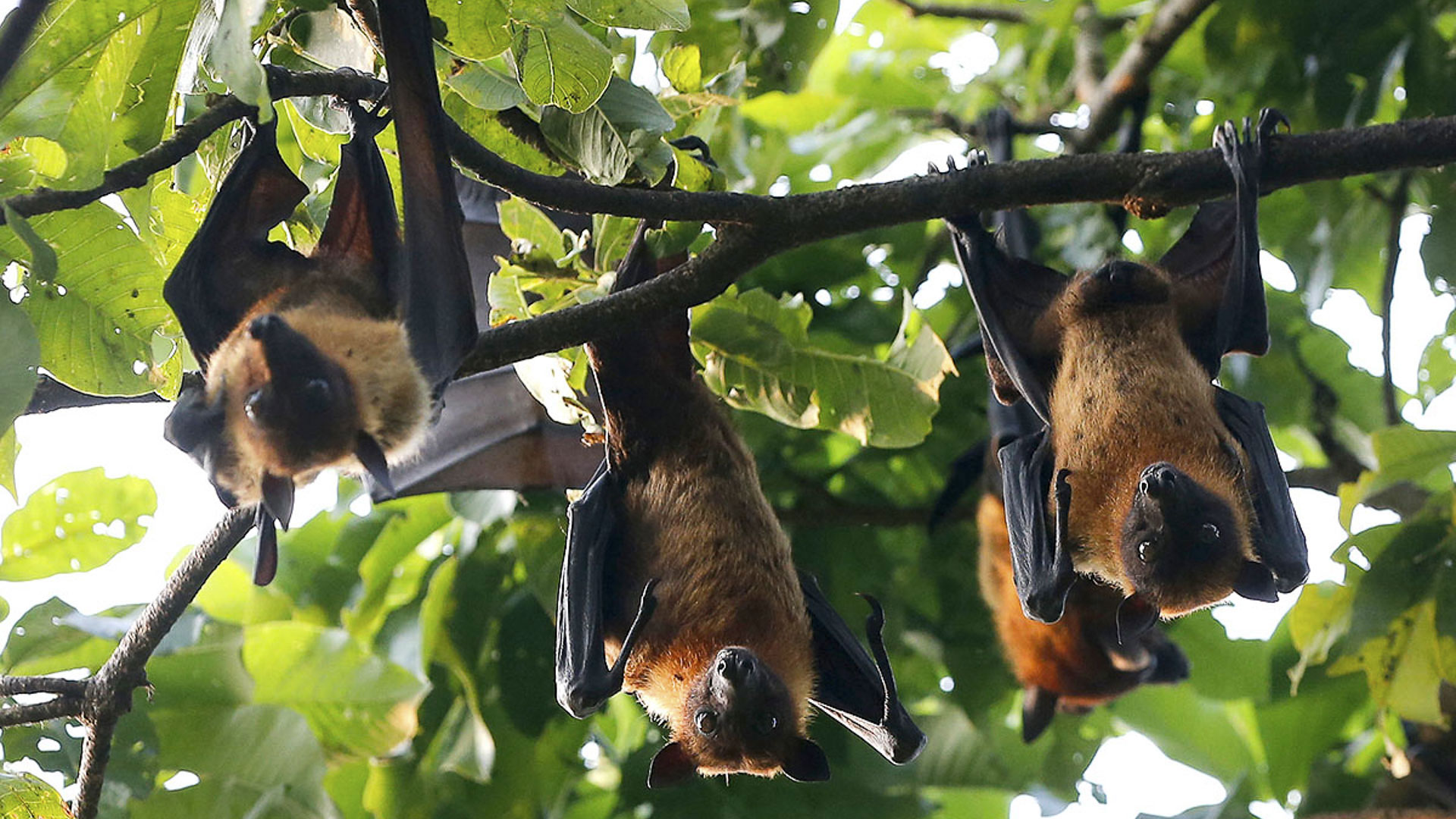
The Reuters jump-zone analysis highlights a global trend that world leaders need to address “for the future of humanity,” Yadav said. “Nobody is safe…It will take no time for a disease outbreak to reach anywhere in the world because of international travel and trade.”
The analysis is based on an examination of 95 spillovers in the past two decades of viruses found in bats, including Ebola, SARS, Marburg and Nipah. The news agency identified more than 9 million sq km in 113 countries where human alteration of sensitive landscapes has created conditions that closely match those around past spillovers.
Kerala, on the eastern shore of the Arabian Sea, has some of the leading jump zones identified by Reuters. It is home to more than 40 species of bats and 35 million people. Its mountain forests and wooded hillocks, prime bat habitat, have been progressively cleared to make way for homes, agriculture, businesses, and industry, with major rail and highway projects still on the agenda.
Quick growth, the Reuters analysis shows, made conditions ripe for spillover across 83% of Kerala at the time of the Nipah outbreak, up from 58% in 2002.
India’s national government didn’t respond to phone queries or emails by Reuters to the country’s Ministry of Health and Family Welfare, the National Centre for Disease Control, the Ministry of External Affairs and other agencies.
Kerala Chief Minister Pinarayi Vijayan, elected in 2016, has sought to speed up growth with major infrastructure projects, industrial development and increased tourism. His press secretary emailed Reuters a statement that said: “All steps will be taken to mitigate the risk of spillover of Nipah virus and other emerging infections from their reservoir hosts to humans while planning development activities in the State.”
The statement cited ongoing efforts by the state to map ecologically vulnerable areas and a planned initiative by two Indian universities, funded by the U.S. government, to improve surveillance of animals and people for Nipah and other zoonotic viruses.
The Reuters analysis found the risk of spillover in the 25 sq km area around Sabith’s family home rose precipitously in the two years before his illness, placing the area in the top 1.5% of locales worldwide most conducive to a bat-borne virus infecting humans.
TREE LOSS IN BAT TERRITORY
A 2002 satellite image of Muhammad Sabith’s neighborhood shows dense foliage surrounding a sprinkling of rooftops. By 2018, when Sabith died of Nipah, new buildings and laterite quarries had consumed chunks of forest. Scientists found bats with Nipah virus roosting near Sabith’s home.
Laterite quarries
Bat roost
Sabith’s
family home
2018 bulidings
2002 buildings
Bat roost
Sabith’s
family home
400 ft
100 m
Source: satellite images by Maxar Technologies
While scientists are certain the virus that infected Sabith came from bats, it’s not clear exactly how he came into contact with the pathogen. Nipah can infect people when their eyes, nose or mouth come into contact with fluids containing the virus – saliva, urine, blood and nasal or respiratory droplets.
In the weeks after doctors learned Sabith had died from Nipah, researchers explored the area. They found bat bite marks on guava, mangoes and berries collected from the area around the family’s home and places he had been working when he fell ill.
Muthalib, now 23, told Reuters that he and Sabith would often pick up fruits beneath area trees and eat them. “We didn’t eat mangoes if they had bite marks, but guavas we’d eat after removing that part.” Their mother, Mariyam umma, said that eating fruit off the ground had been common practice in the village and that Sabith had done so in the weeks leading up to his illness.

“We used to eat every fruit we got,” she said. “I didn’t have any fears.”
Scientists tested the fruit from around the home and Sabith’s worksites. But they found no evidence of Nipah. Rain may have washed away residue of the virus, they speculated, or Sabith may have been infected elsewhere.
A search of the neighborhood led to a colony, near their house, of flying foxes, a common fruit bat. A so-called megabat, the flying fox has a five-foot wingspan and a canine face. It is found throughout the Asian tropics.
THE FLYING FOX
Testing by Yadav’s lab at the National Institute of Virology found Nipah in 13 of 52 flying foxes the scientists captured near Sabith’s house. Human and bat strains of the viruses were 97.7% to 100% identical, her study reported, “indicating bats were the source of the outbreak.”
“If you are sitting under a tree, and a huge number of bats are there, and they’re dropping urine, and fecal material, it could be direct exposure,” Yadav told Reuters.
Compared with prior known spillovers elsewhere in Asia, the outbreak was particularly deadly, killing 90% of those infected. A 1998 outbreak in Malaysia killed nearly 40% of its victims. Outbreaks in Bangladesh starting in 2001 have had an overall mortality rate of about 70%.
The Nipah outbreak cost Mariyam umma two sons, her husband and a sister-in-law. Her losses are still too much to fathom, she said: “It’s painful for me to even remember their names.”
Scientists who have studied the virus told Reuters they don’t know why more recent outbreaks have been more lethal. The Kerala strain is different from those that appeared in Bangladesh and Malaysia, Yadav said, but it’s not clear yet how that affects the virus’s infectiousness, deadliness or clinical course.
Its high death rate, its infectiousness and the lack of a cure have put Nipah on the World Health Organization’s short list of high-priority pathogens with epidemic potential.
Scientists who study Nipah fear the virus will mutate, and a more highly transmissible strain will emerge from bats.
“I'd say, even more likely, is that it's out there already," said Raina Plowright, a scientist based at Cornell University, who has co-authored more than 100 studies on bat viruses and spillover. “The more that we pressure these environments, the more likely these events are going to happen.”
As development in risky areas continues apace, Nipah has found new places to spill over. To learn more, Reuters visited six spillover sites, reviewed hundreds of research papers, and interviewed dozens of doctors, scientists, and grieving relatives of Nipah victims. Around each outbreak, runaway development of the local economy had paved a pathway for a spillover. In each case, the virus found it.
COUGHING PIGS
Scientists suspect Nipah has lived among flying foxes for millennia.
But the spillovers of recent decades have illustrated a versatility the virus wields as a pathogen: its ability to infect cells that possess so-called ephrin-B receptors. These receptors regulate what gets in or out of cells that line vital organs and the central nervous system. Because all mammals have similar receptors, Nipah is able to infect many of them, including humans.


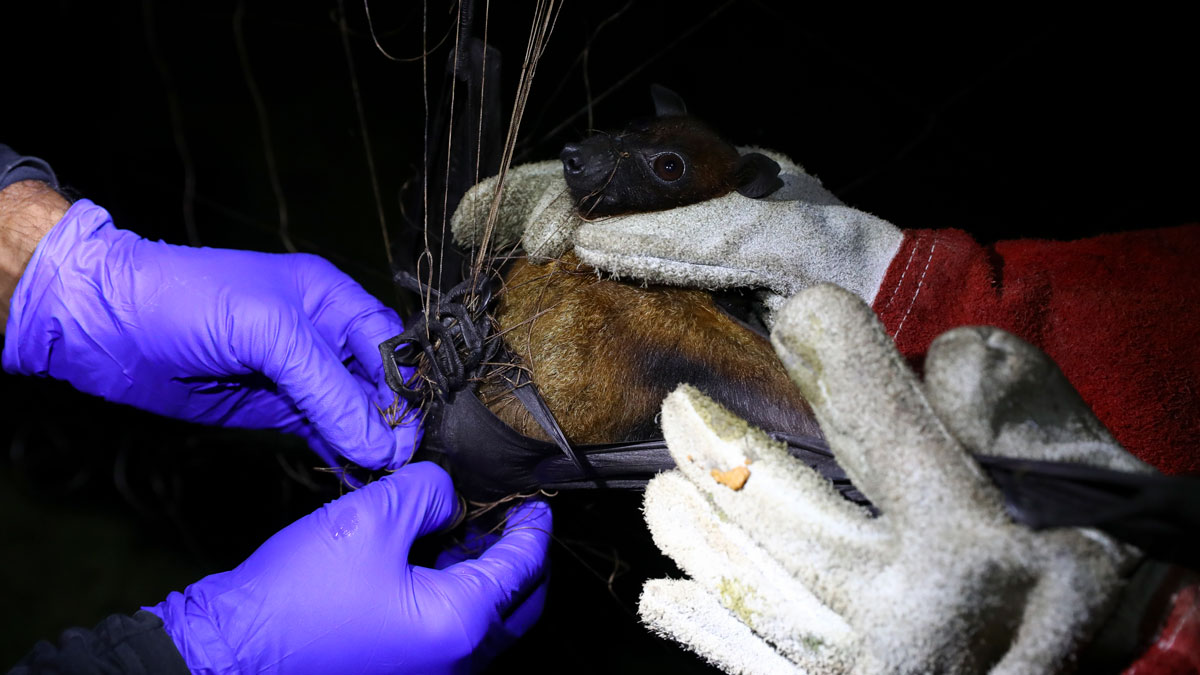
NETTING NIPAH: Researchers in Bangladesh use nets to catch bats and collect samples to find the Nipah virus in the wild. REUTERS/Mohammad Ponir Hossain
Whether Sabith ate contaminated fruit or somehow came into direct contact with a bat, the virus entered his cells. From there, it would have replicated and moved through the organs of his body, eventually infecting his brain and respiratory tract, according to descriptions by Nipah experts of how the disease progresses. Once he began coughing, it easily spread from Sabith to others through droplets.
In earlier outbreaks, the mechanism was less direct.
In 1998, pig production in Malaysia was at an all-time high. Driven by growing demand for pork, the pig population that year swelled to 3 million head, according to one study, a 50% increase in less than a decade. For extra income, many pig farmers also planted fruit orchards.
In the Kinta Valley, about 200 km north of Kuala Lumpur, the concentration of pigs and mango trees was particularly high. Flying foxes once roosted in tall forest, living off wild fruit and the nectar of flowering trees. But later, as their habitat diminished, the dog-faced megabats sought out farmed fruit instead.
One colony established itself near a farm with 30,000 pigs and groves of mango. Farm workers there later told scientists that flying foxes at night would raid the fruit trees, some of whose branches overhung pigpens.
“They’re very messy eaters,” said Juliet Pulliam, an epidemiologist at Stellenbosch University in South Africa, who authored a reconstruction of the outbreak. “They tend to slobber everywhere and drop things as they’re eating. They also tend to urinate and defecate and lighten the load before they take off.”
At some point, the virus infected the pigs. The animals began coughing.
Initially unalarmed, the farm sold piglets to other farms and sent mature pigs for slaughter. Soon, some of the farm workers and the drivers who transported the animals sickened. Slaughterhouse workers also fell ill. Unlike the pigs, the workers’ main symptom was fever, not cough.
Because many victims died of brain inflammation, public health officials initially suspected Japanese encephalitis, a mosquito-borne disease with similar symptoms. They fogged the region with insecticides, but the virus continued to spread.
In March 1999, scientists analyzed the spinal fluid of a victim from the town of Kampung Sungai Nipah. Kaw Bing Chua, a Malaysian virologist, identified the pathogen, later named Nipah after the village. The Malaysian government soon after ordered the slaughter of a million pigs, ending the outbreak that infected nearly 300 people and killed more than 100.
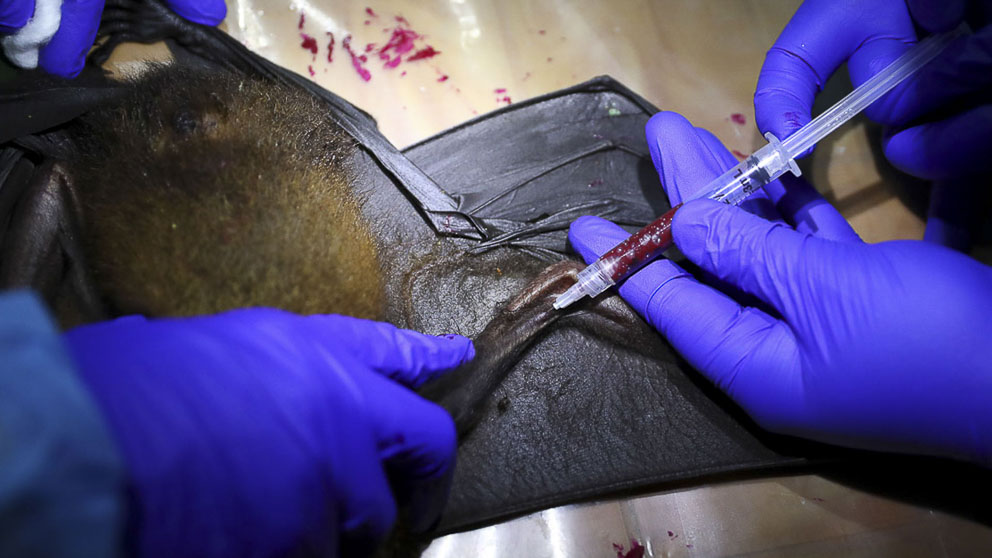
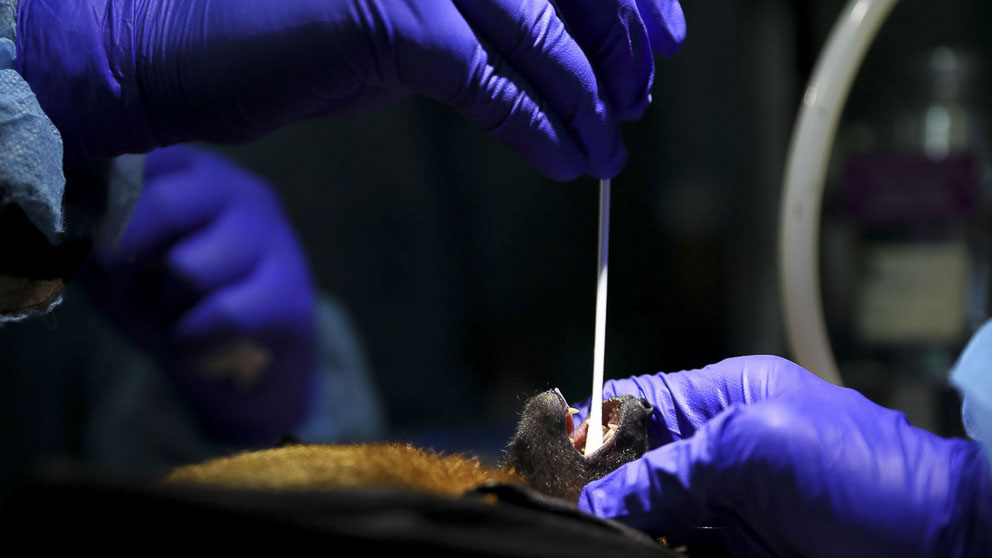
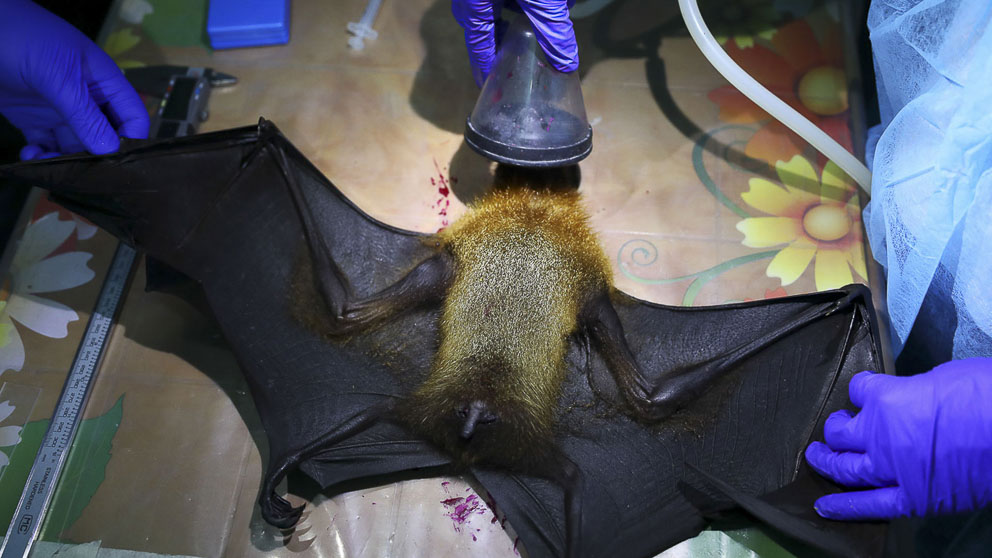
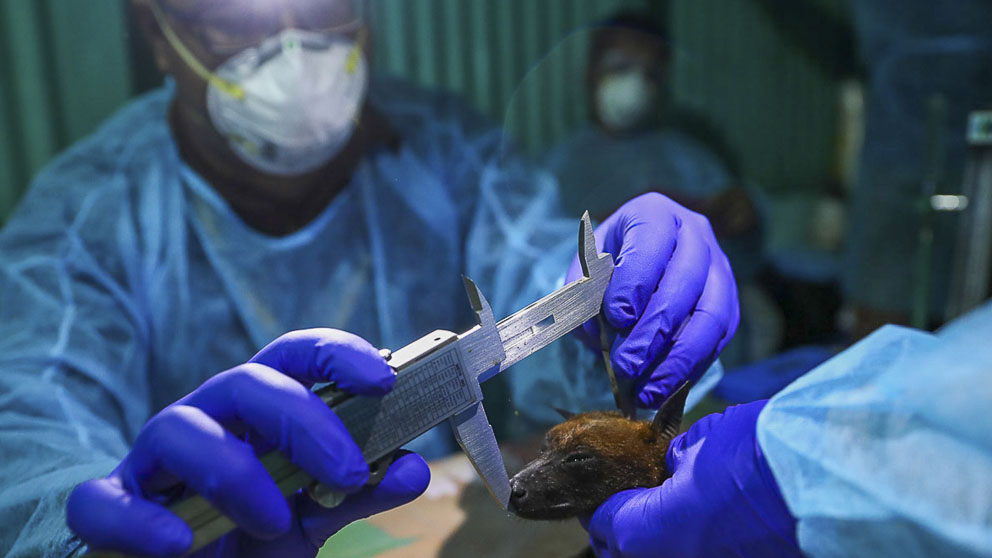
NEW STRAINS: Scientists don’t know why recent outbreaks of Nipah have been more lethal than initial infections by the virus. Researchers, like those testing bats in Bangladesh above, seek strains of the virus for answers. REUTERS/Mohammad Ponir Hossain
A year later, Chua’s team found the same strain of Nipah virus in flying foxes. The cause of the epidemic became clear, Chua said: deforestation followed by the integration of pig-farming and fruit orchards. Malaysia’s government placed restrictions on orchards near pig farms. The country hasn’t documented an outbreak since.
In 2001, Nipah found another path, 4,000 km away, once again abetted by close proximity between bats and people. Starting in northeast India, then in Bangladesh, patients appeared in hospitals with fevers. This time, many had coughs.
The outbreak in India and two more in Bangladesh killed 62 of 91 people infected before the U.S. Centers for Disease Control detected a new strain of Nipah, studies and public health data show. Scientists found antibodies to the virus in animals nearby – flying foxes.
Unlike in Malaysia, where most victims had direct contact with infected pigs, this strain was passing from person to person. It caused coughs and also spread via droplets.
“Pathogens that could concern us have two tricks,” said Emily Gurley, an epidemiologist at Johns Hopkins University, in Baltimore, who studied the outbreaks in Bangladesh. “One is the ability to cross species and infect people. The other is to be efficient at spreading between people.”
Doctors were still unsure how the virus had spilled over, though.
In 2005, an outbreak in Tangail, a central district of Bangladesh, killed 11 of 12 victims. Gurley and colleagues hurried to the region and sifted for clues in the victims’ daily routines. They were struck by one common element: Seven of those sickened had consumed raw date palm sap, a sweet, local delicacy tapped from area trees.
A MYSTERY SOLVED
Scientists discovered sap from date palm trees serves as a vehicle for the Nipah virus, enabling it to leap from bats to humans.
Date palm tree
Licking
Bats lick syrup that flows to collection pots from cuts in the trunk.
Contamination
Bats’ saliva mixes with the sap, and their urine and feces dribble into the pots. People get Nipah from drinking the contaminated sap.
A man whose young son was one of the victims said he often heard bats in the trees above taps he set around his home and sometimes found feces in the sap he collected, Gurley and colleagues wrote in their research. In addition to home tree taps, date palm juice is collected on plantations. With infrared cameras, the scientists filmed flying foxes at area plantations licking syrup with their long, pink tongues – and their saliva and urine dripping into the buckets beneath.
Through the sap, studies showed, the virus was infecting people directly, without passing through another animal. “Case fatality if you’re infected through date palm sap,” Gurley told Reuters: “90% or higher.”
Despite warnings by public health officials to avoid drinking raw date palm sap, more than 160 have died since then.
In the city of Ishwardi, doctors this year patrolled with megaphones and broadcast warnings from loudspeakers at mosques after Soad Hossain, a 7-year-old boy, died of Nipah on Jan. 23. He had drunk sap from a tree in his yard. His parents told Reuters they had never heard of Nipah. “Nothing could make up for or console this loss,” said his father, Mohammad Sanwar Hossain, a 33-year-old day laborer.
F.A. Asma Khan, a physician and regional official for Bangladesh’s Ministry of Health and Family Welfare, told Reuters that some Bangladeshis, especially some who are illiterate, remain hard to reach despite the government’s public awareness campaigns.
“BIOLOGICAL DISASTER”
A study Gurley co-authored found evidence suggesting that bats had adapted to the fragmented forests and dense population of western Bangladesh. They split into smaller colonies scattered throughout villages, where they fed on human food sources.
Few places had more potential for spillover than Kerala. In the past half century, the Indian state changed dramatically.
HIGH RISK: Rapid development has altered ecosystems and increased the risk of viral spillover in portions of the Indian subcontinent, including the fast-growing state of Kerala and parts of Bangladesh. REUTERS
Lush forest in the early 1970s carpeted nearly 25,000 of Kerala’s 38,000 sq km, according to a report by the Indian Institute of Science’s Centre for Ecological Sciences. From 1973 to 2016, more than a third of that woodland disappeared, with rapid urbanization and expansion of plantations. Kerala is one of India’s leading producers of rubber, coffee, coconut and spices.
“In the name of development, we degraded the landscapes which are ecologically fragile,” report co-author T.V. Ramachandra told Reuters. “We made the region more vulnerable.”
Urban areas, meanwhile, ballooned from 95 sq km to more than 4,000. Three of the world’s 50 fastest-growing metropolitan areas are in Kerala, according to UN urban population estimates for large cities.
A study by an international team of scientists, based on 2000-2018 data, listed Kerala among the top seven “global hotspots” for the potential emergence of a new, SARS-related coronavirus. The authors cited deforestation, high livestock density and human encroachment on bat habitat as “major factors contributing to the spillover of zoonotic infectious diseases.”
But Nipah emerged first.
Flying foxes abound in coastal areas of Kerala and in the midlands, wooded hills running north and south between the sea and mountains to the east. The open terrain accommodates the bats’ large wingspan. A 2022 study that mapped the distribution of bat species in Kerala found 90% of flying fox territory there is unprotected, vulnerable to development.
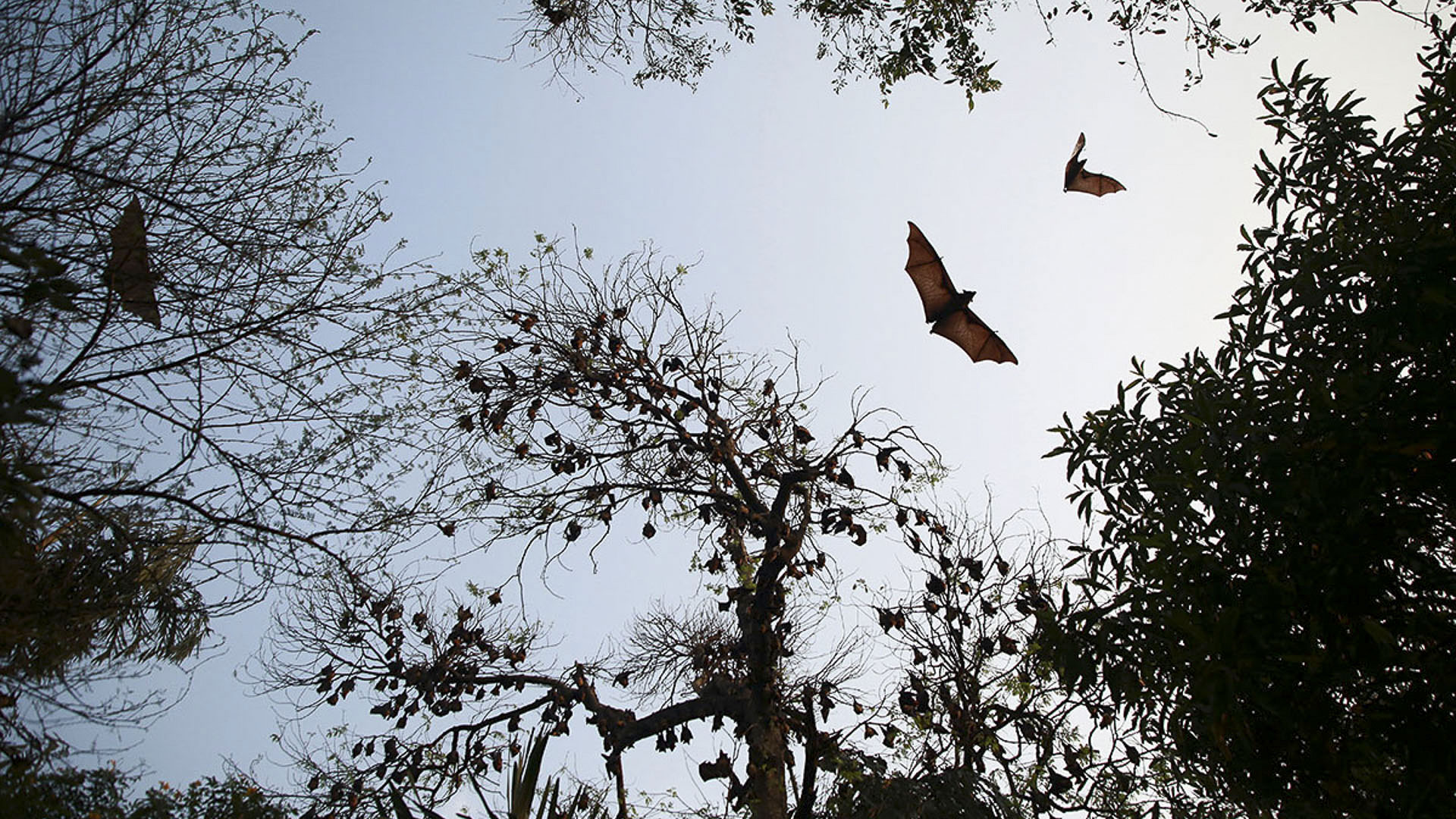
The coast and midlands are where most of Kerala’s growth has occurred. It’s also where three recent spillovers happened: the 2018 outbreak that began with Sabith and two individual cases since.
Malik Fasil Madala, a wildlife ecologist who studies flying foxes at Kerala Agricultural University, has observed destruction of the animals’ habitat for mining and construction. He cited studies that found evidence that stress from such disturbances weakens bats’ ability to fend off viruses. “And virus spillover tends to happen more,” Madala said.
After the 2018 spillover, public health officials began a campaign to dissuade residents from eating fruit with bite marks or doing anything that could disturb flying fox colonies. But residents say the bats have become increasingly difficult to avoid.
Gokul Krishna, a telecommunications student, couldn’t leave the house in the evening without encountering flying foxes. The bats flocked to a mango tree just outside the door of the home where he and other family members lived.
The Reuters analysis found that nearly 90% of the roughly 200 sq km around the home – outside the city of Kochi, Kerala’s largest – was at high risk for spillover.
RAPID EXPANSION OF RISK
In India, more people than any other country live in areas with high spillover risk. Population in those parts of India grew dramatically from 2002 to 2020, to nearly half a billion people.
Source: Reuters analysis
TREE LOSS IN BAT TERRITORY
A 2002 satellite image of Muhammad Sabith’s neighborhood shows dense foliage surrounding a sprinkling of rooftops. By 2018, when Sabith died of Nipah, new buildings and laterite quarries had consumed chunks of forest. Scientists found bats with Nipah virus roosting near Sabith’s home.
Laterite quarries
Bat roost
Sabith’s
family home
2018 bulidings
2002 buildings
Bat roost
Sabith’s
family home
400 ft
100 m
Source: satellite images by Maxar Technologies
The bats’ presence had increased noticeably in recent years, Gokul told Reuters.
“If we walked below the tree, they would shower mango leaves upon us, and I used to cover my head with my hands to prevent mangoes from falling on me,” he said. “I saw their toothprints on the mangoes that fell down. Sometimes I would take those mangoes and throw them away to clear the pathway and leave my hands unwashed.”
On May 23, 2019, Gokul developed a fever. Doctors at local clinics prescribed antibiotics, but his condition worsened, he said.
Over the next week, he began hallucinating and shaking so violently that his entire bed trembled. He told Reuters he remembers nothing between May 27, four days after his first symptoms, and June 9, the day he awoke in intensive care. It was his birthday.
Weeks later, before he was discharged from the hospital, a local health official told Gokul he had tested positive for Nipah.
Alarmed, public health officials by then had fanned out, traced his contacts, and isolated anyone who could have been infected. They had a lucky break: He didn’t develop a cough, limiting the virus’s ability to spread to others. No one else caught it. A study led by Gurley of 248 Nipah victims in Bangladesh found one in 10 infected others, she said.
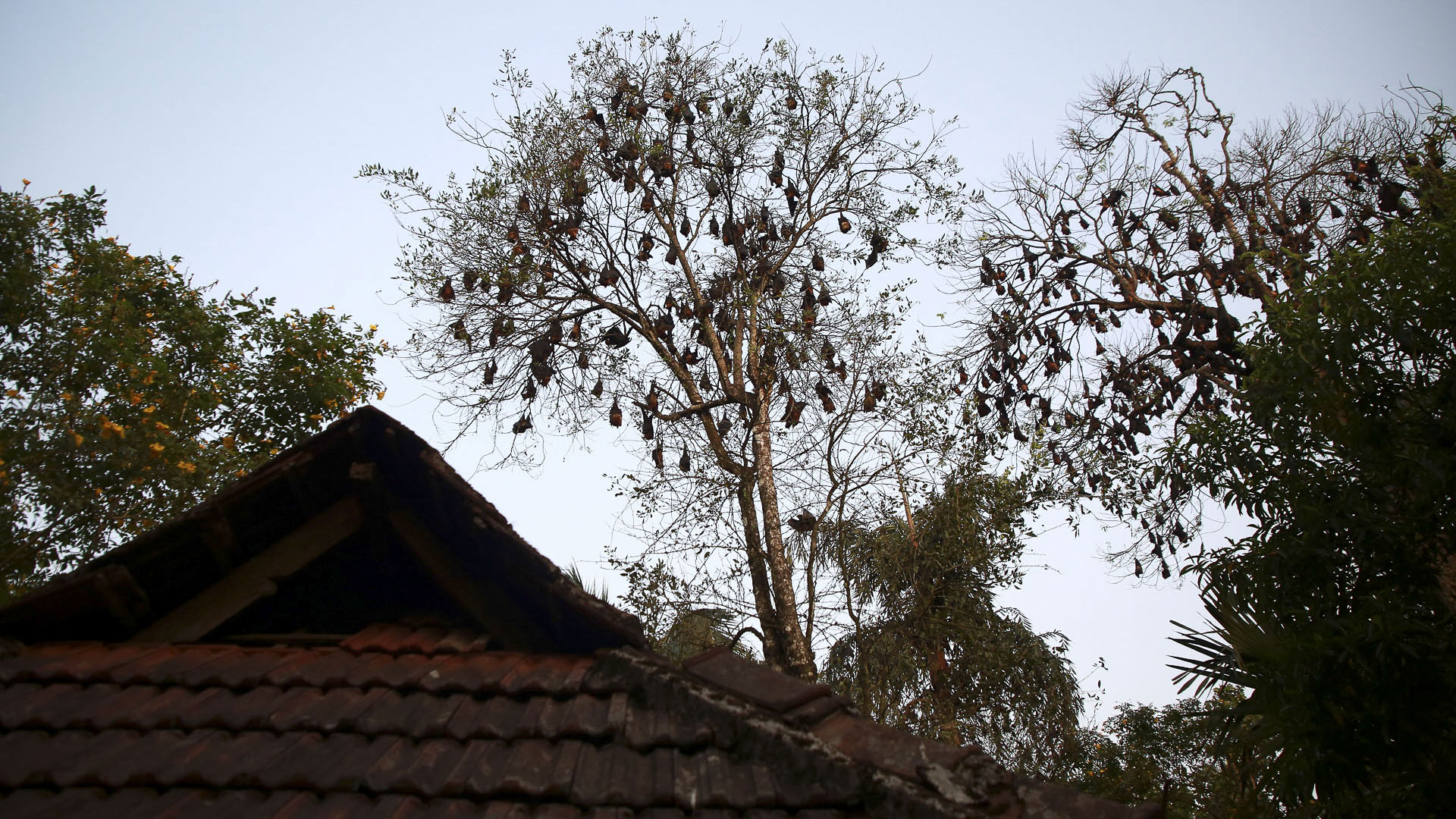
A search for Nipah in flying foxes near the family’s home did little to allay fears about future spillover. Thirty percent of the bats scientists captured around Gokul’s house and in nearby plantations tested positive. About 60 km to the east, around the college Gokul attended, scientists found more than 10,000 flying foxes in a single half-acre fragment of forest. Nearly 20% of the bats tested there were positive.
Gokul survived, but suffered memory loss and depression, long-lasting neurological problems shared by other Nipah survivors. He couldn’t finish school or find work. Now 25 years old, he has slowly nursed himself back to health through meditation and diet, he said.
Recently, his home and those of neighbors were demolished to make way for the widening of a national highway. The highway project, overseen by the national government, runs nearly the entire length of Kerala and passes within 20 km of the other two Nipah outbreak sites to the north. A planned high-speed rail project parallel to the highway will bring additional tree loss and development.
The environmental assessment for the railway includes one paragraph, in a section entitled “biological disaster,” acknowledging the risk of spillover and spread of a zoonotic virus. Vinod T.R., one of the authors of the report, said the assessment was expedited and the analysts didn’t have the time or resources to do a more in-depth examination. “The State is already a hotspot of Zoonotic diseases and any further development may increase the spread,” he wrote in an email to Reuters.
India’s Ministry of Road Transport and Highways didn’t respond to emails or phone calls from Reuters. The Ministry of Railways declined to comment, referring Reuters to the project website.
The statement from Chief Minister Vijayan’s office described outbreak readiness as a high priority. His administration set up Nipah monitoring stations at medical centers after the 2018 spillover and launched a campaign to improve hospital preparedness after the outbreak a year later.
Nevertheless, a third spillover took medical authorities by surprise in August 2021. It occurred just 40 km from the site of the first outbreak. Over five days, 13-year-old Hashim Vayoli, feverish and vomiting, was taken by his parents to a clinic, two small hospitals and the Government Medical College Hospital, where Sabith had died three years earlier.
Doctors were stumped.
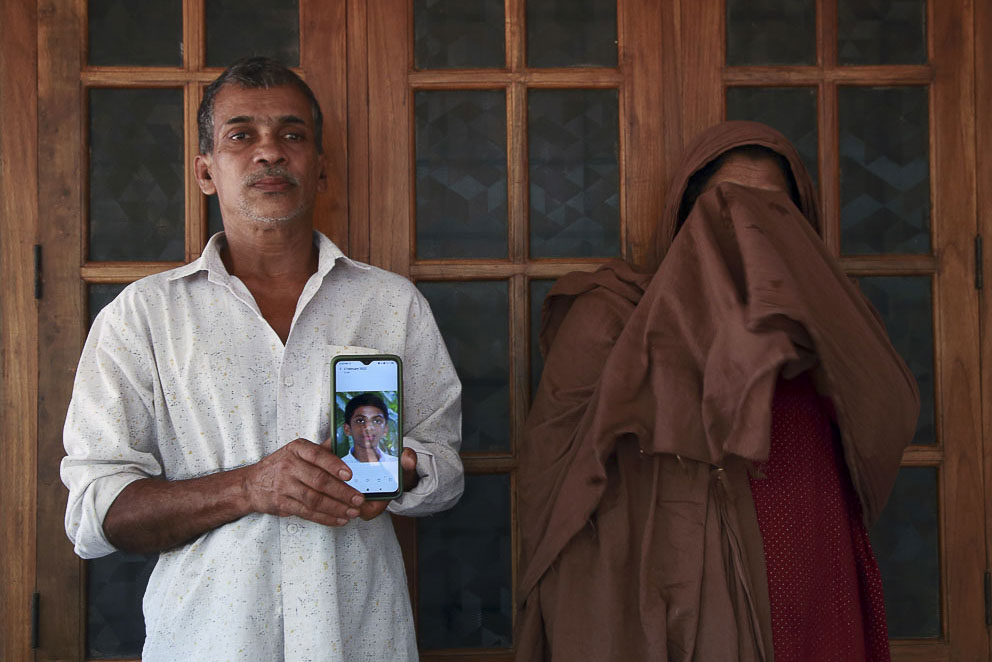
Chandni Radhakrishnan, the doctor in charge of the college hospital’s emergency medicine department, said timing had played a factor. The previous Nipah outbreaks had occurred during the spring fruit season. Doctors, focused on the COVID-19 pandemic, weren’t expecting Nipah in late summer.
Hashim began convulsing. As he grew weaker and struggled to breathe, the hospital transferred him to a facility with a child-sized ventilator. Medical staff ordered an MRI. On September 4, the doctors told his parents Hashim had Nipah.
He died the next day.
By then, at least 64 people had come into close contact with Hashim, public health investigators found. Many were masked because of the pandemic.
Family members had tended to him at the Government Medical College Hospital, wiping foam from his mouth with their clothing.
“He would put his tongue out and bite it. So we helped him put his tongue inside with our hands,” said his mother, Wafeedah. “There was not even a wash basin there to wash our hands.”
But, once again, health authorities dodged a bullet: Hashim, like Gokul, didn’t develop a cough or spread the virus to anyone else.
Within weeks of his death, scientists found Nipah in flying fox colonies near Hashim’s home in the village of Pazhoor. Twenty percent of the bats they tested in a roost a kilometer away, and more than half of those tested in a roost 18 km away, were positive.
Investigators, though, couldn’t determine how Hashim became infected.

Reuters visited his home last year. It sits in a wooded area between a recently expanded mosque and a river. A betel nut orchard and mango, jackfruit and date-palm trees grow nearby. Those foods and the water attract flying foxes.
His father, Aboobacker, said bats multiplied in their neighborhood several years ago, after a stand of trees across the river was cleared for a banana plantation. Wafeeda struggles to accept that her son died from a virus carried by bats. Some people in Kerala want to eradicate the flying foxes, but she doesn’t think they should be harmed.
“We can’t kill living beings, right?” she said.
The Bat Lands
By Deborah J. Nelson, Ryan McNeill, Sreekanth Sivadasan, Allison Martell, Ruma Paul, Andrew R.C. Marshall and Adolfo Arranz
Contributor: Rupam Nair
Data: Ryan McNeill and Allison Martell
Additional graphics: Daisy Chung and Sam Hart
Illustration and animation: Adolfo Arranz and Matthew Weber
Photo editing: Simon Newman
Video: Sreekanth Sivadasan, Rafiqur Rahman, Sivaram V, Rosanna Philpott, Lucy Ha and Matthew Stock
Edited by Feilding Cage, Paulo Prada, Janet Roberts and Blake Morrison
METHODOLOGY
Guided by scientists and statisticians, Reuters created an original method for assessing where deadly viruses are most likely to spill over from bats to humans. Click here for a detailed explanation of how we did it.
PART 1: WEST AFRICA
THE WORLD'S BAT LANDS ARE UNDER ATTACK, SEEDING RISK OF A NEW PANDEMIC. HERE'S WHERE.
More from The Bat Lands »
PART 3: LAOS
CHINA, BIRTHPLACE OF THE COVID PANDEMIC, IS LAYING TRACKS FOR ANOTHER GLOBAL HEALTH CRISIS
PART 4: BRAZIL
DEEP IN THE AMAZON, SCIENTISTS RACE AGAINST TIME TO IDENTIFY UNKNOWN PATHOGENS
PART 5: SOLUTIONS
BATS CARRY KILLER VIRUSES. SCIENTISTS SUGGEST WAYS TO COPE

No comments:
Post a Comment